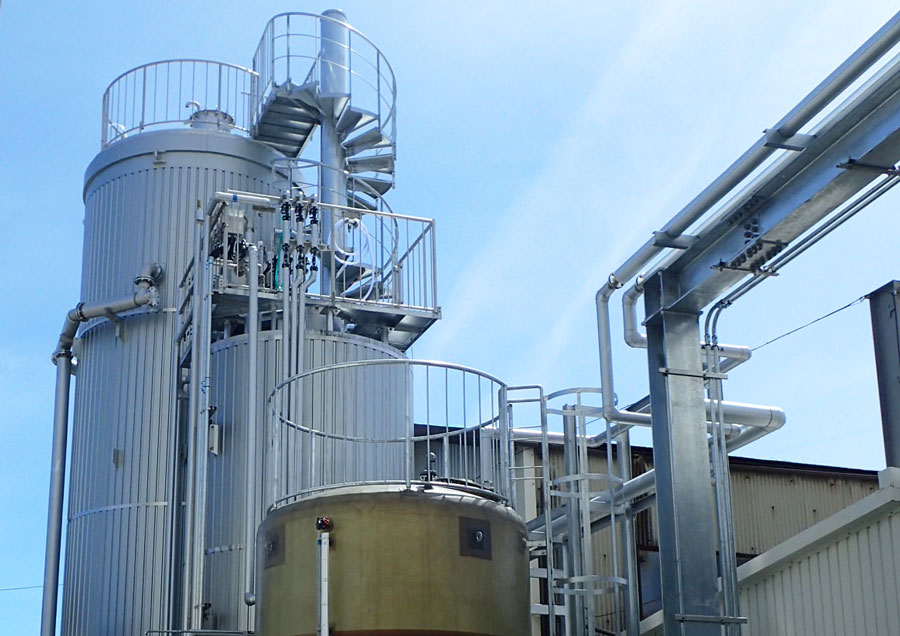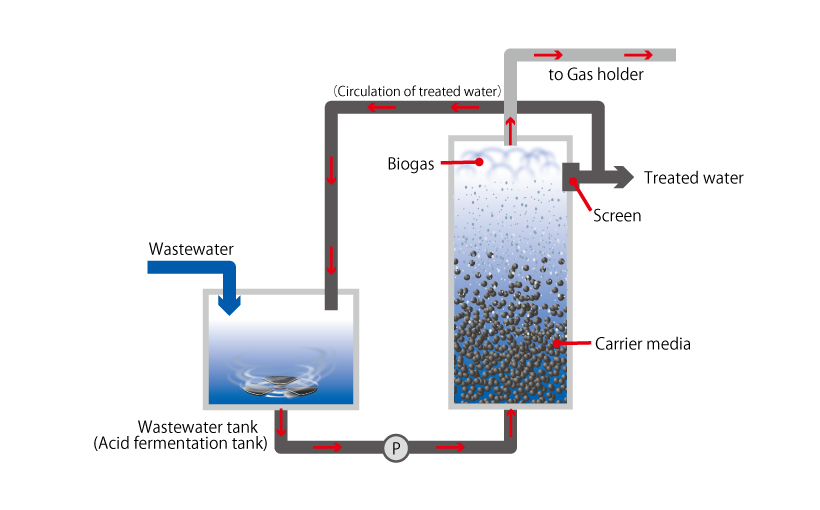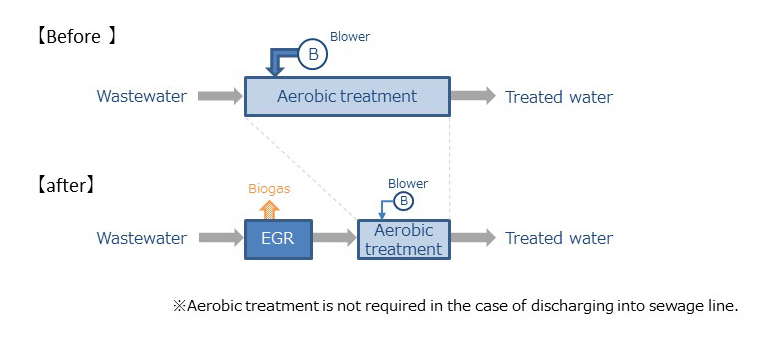EGR(High-load methane fermentation equipment)
Applicable to a wide range of wastewater concentrations using two methods (granule method and carrier method)

EGR is a wastewater treatment system that utilizes biomass energy to save energy, reduce sludge, and create energy.
In addition to the conventional granule method, we also started to offer a carrier method model. We propose appropriate equipment according to the wastewater properties (CODcr concentration, substrate, or others).
Features
- Saves space
The reactor capacity can be reduced due to the highly efficient processing, enabling a smaller installation space and allowing the site area to be used more effectively.
※Achieves a footprint of 1/20 to 1/50 compared to aerobic treatment - Reduces power consumption
Since EGR uses anaerobic treatment, it does not require aeration unlike aerobic treatment and reduces power consumption significantly. - Reduces sludge disposal costs
EGR generates a negligible amount of excess sludge. It is environmentally friendly and reduces disposal costs. - Effective use of biogas (energy creation)
The resulting biogas (methane concentration ≈ 80%) can be effectively used as a source of energy for various utilities.
The "carrier method": developed in response to customer needs
The carrier method dramatically expands the scope of application for anaerobic treatment of organic wastewater. The advantages of anaerobic wastewater treatment are unchanged and the retention of methane bacteria is no longer dependent on the formation of granule sludge,
Loading immobilized carriers of methane bacteria in place of loading granules of raw water allows methane bacteria to grow at higher densities. EGR can also treat low-concentration organic wastewater and single substrate wastewater (e.g., alcohol), which are considered difficult to form granules in.
Schematic Flow

Typical example of application of EGR
Typical example of application in a wastewater facility (discharging into a river)
Installation in a river discharge facility also requires aerobic treatment, but when used in conjunction with EGR, both existing aerobic treatment and power consumption are reduced.
